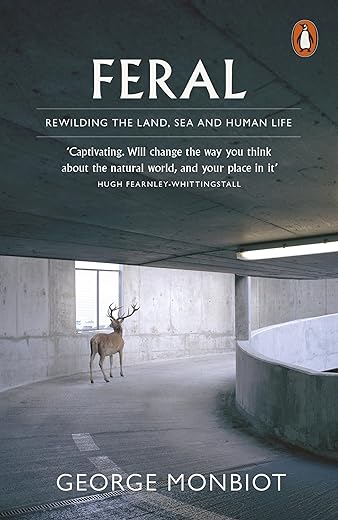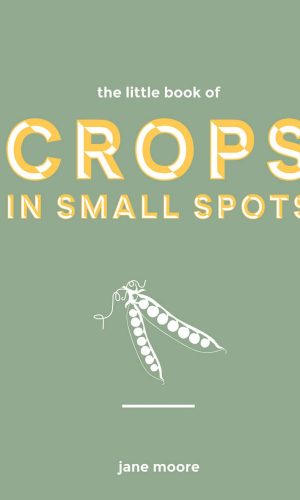Feral: Rewilding the Land, Sea and Human Life
£9.40£10.40 (-10%)
‘Captivating. Will change the way you think about the natural world, and your place in it’ Hugh Fearnley-Whittingstall
In Feral, George Monbiot, one of the world’s most celebrated radical thinkers offers a riveting tale of possibility and travel in the wild
How many of us sometimes feel that we are scratching at the walls of this life, seeking to find our way into a wider space beyond? That our mild, polite existence sometimes seems to crush the breath out of us? Feral is the lyrical and gripping story of George Monbiot’s efforts to re-engage with nature and discover a new way of living. He shows how, by restoring and rewilding our damaged ecosystems on land and at sea, we can bring wonder back into our lives. Making use of some remarkable scientific discoveries, Feral lays out a new, positive environmentalism, in which nature is allowed to find its own way.
Read more
Additional information
| Publisher | 1st edition (5 Jun. 2014), Penguin |
|---|---|
| Language | English |
| Paperback | 336 pages |
| ISBN-10 | 014197558X |
| ISBN-13 | 978-0141975580 |
| Dimensions | 12.9 x 1.9 x 19.8 cm |










by Vigilantius
The premise, which I buy into, is as JG Ballard wrote and Monbiot quotes: ‘the suburbs dream of violence. Asleep in their drowsy villas, sheltered by benevolent shopping malls, they wait patiently for the nightmares which will wake them into a more passionate world.’ The book – and indeed Monbiot’s whole life – is a reaction against something which he knows all too well (he grew up in Henley-on-Thames, the son of a Conservative local councillor).
He does ‘not romanticise evolutionary time … Neither [does he] wish to return to the hallows and gallows of the civilisations we have left behind.’ Instead, the ‘rewilding of natural ecosystems that fascinates me is not an attempt to restore them to any prior state, but to permit ecological processes to resume.’ He contrasts this to mainstream conservationist movements which seek to ‘freeze living systems in time … to manage nature as if tending a garden.’
Rewilding, as conceived by Monbiot (drawing on other acknowledged thinkers such as Dr Mark Fisher), ‘is about resisting the urge to control nature and allowing it to find its own way. It involves reintroducing absent plants and animals … pulling down fences, blocking drainage ditches, but otherwise stepping back … The ecosystems that result are best described not as wilderness, but as self-willed … [with] no end points, no view about what a “right” ecosystem … might look like.’
As you can see, Monbiot writes admirably clearly. His passion is infectious, and his historical perspective is well-informed, with no rose-tinted glasses. Everywhere, he notes, is man-made (at least, in Europe). He traces convincingly the inter-connected nature of nature, most dramatically by looking at the top predators in a landscape and seeing how their removal by man leads inexorably to major changes in the physical landscape. For example, there is a link between the decline of vultures and the spread of rabies in India: a livestock drug, which remains present in dead cattle, kills the vultures (but not dogs) which feed on carcasses of diseased animals; the carrion is instead eaten by feral dogs, which have multiplied as a result; and because the wild dogs are far more likely to get rabies and because they bite humans frequently, human cases of rabies in India have rocketed.
Monbiot can back himself up some blind alleys, such as his obsession with the reintroduction of wolves into the UK – and he tends to jump about from pet topic to pet topic like an antelope on helium. He is also guilty of some gross exaggerations, such as his claim that ‘one ground sloth could have fed a clan of hunters for months’. This doesn’t matter, except that it makes it easier to dismiss him as a crank.
Looking beyond these self-indulgences, Monbiot does have something powerful to say about authenticity in our management of the landscape, and his enthusiasm for nature, red in claw and tooth, is a welcome antidote to the creeping suburbanisation and sentimentalisation of our planet.
by AmazonUser
Monbiot is one of the greatest living English non-fiction language writers. You can disagree with some or all of what he says, but he writes very well. He is also the strongest voice for rewilding, an essential movement that is often misunderstood.
Some bits of this book are dated. The idea of a closed canopy early Holocene Britain (the idea that a squirrel then could jump tree to tree from Land’s End to John O’Groats) has been broadly disproven. I also wish he discussed rural New England, which has naturally rewilded without intervention.
Can’t wait for the release of Regenesis.
by Sally Walker
Monbiot defines what his ideal form of re-wilding is and why he believes that it is important and necessary that some is urgently undertaken. He provides examples of re-wilding in Europe and the UK, although we learn that the UK lags far behind in our willingness to re-wild tracts of our countryside. He sets out why this might be the case. He puts the arguments for re-wilding and documents those against, demonstrating how actually it can be a win-win for nature and the economy, because of course it always comes down to money.
I am not sure that I can write a review of this book that will be sufficiently worthy of it. It is quite simply excellent, (although I feel that this is not sufficiently effusive) not only because of its content, but also because of Monbiot’s writing style: always hugely engaging and intelligent, lyrically descriptive in places, incisive, cogent, sarcastic and necessarily provocative and controversial in others.
It is the result of approximately 3 years of research and this shows by the depth and range of detail, information and examples that it contains. We need to know this information so that firstly we come to understand Nature’s plight and secondly begin to care about it. Because unless we do and then are prepared to do something about it, we will continue along the destructive motorway we are racing along of ‘live for today who cares about tomorrow’ with an almost total dis-connect from nature, so the desecration will continue to its ultimate end. Let us not overlook the fact that we humans will suffer and possibly perish, whilst it is likely that Nature would recover minus the destructive apes.
Monbiot is brave for airing his beliefs and opinions because these are at such variance to the die-hard norm. No doubt the nay-sayers will have tried hard to undermine this book. But thank goodness that somebody is prepared to speak out for Mother Nature. He argues Her case forcefully without being overly dogmatic.
It should, I believe, be compulsory reading for all humans of 16 years and above because by this means, there might just be a sufficient number who agree with this book’s central message so that a change can be effected and some re-wilding, on whatever scale, can be brought into being.
If you read this book you will never look at nature conservation UK’s version of and the UK countryside and the relative paltry quantity of wildlife that there is within it in the same way again. To read this book is akin to having cataracts removed from your eyes. If you do not find this book thought-provoking, then I suggest to you that you be made of stone or so thoroughly dis-connected from the Earth that feeds you.
Just read this book, please.